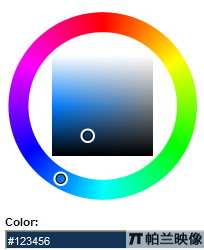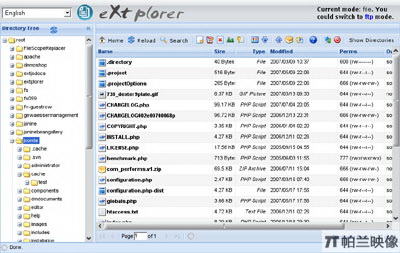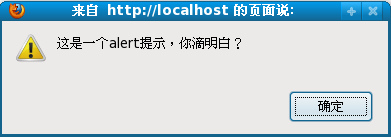|
|
先看下下面幾種寫法
1.function f(x){return x*x;};f(x);
2.(function(x){return x*x;})(x);
3.(function(x){return x*x;}(x));
第一種我們應該都很熟悉了,這是我們經常使用的寫法。第二第三種都是匿名函數的寫法。
--------------------------------------------------------------------------------
第二種
可以這樣理解:
var f=function(x) {return x*x;};f()
那我們不通過f這個變量來引用函數就是
function(){}()
然而這樣肯定是錯誤的就像
var f=1+2;
f=f*0;
與
var f=1+2*0;
結果不同一樣。
要得到正確結果只能:
f=(1+2)*0;
也就是要明確的標識出程序塊,即:
(function(){})()
肯你有疑問:括號“()”到底是不是起到了標識代碼塊的作用?
我們可以用JavaScript的內置函數檢測一下!
舉一個最簡單的例子:
alert(4)
這段代碼會彈出提示內容是“4”
改成這樣
(alert)(4)
可以看到執行的效果和上一段代碼一樣。
這種形式的函數執行也被很多JavaScript框架所采用。
--------------------------------------------------------------------------------
第三種,如果你用過jsvm框架的話就會發現里面的代碼使用了這種形式。
那如何解釋第三種情況呢?
為了弄明白瀏覽器是如何理解這樣的寫法的,我們可以利用一下Mozilla Firefox的錯誤控制臺功能。
在代碼中插入一段錯誤代碼,代碼段如下:
(function(s){s+s}(1)).splice();
打開Mozilla Firefox的錯誤控制臺,可以看到有如下的錯誤提示
錯誤: (function (s) {})(1) has no properties
源文件:file:///C:/Documents…….html
行:18
可以認為,瀏覽器對于
(function(s){s+s}(1))
這樣的代碼按照
(function (s) {s+s})(1)
來解析的。
--------------------------------------------------------------------------------
到此可能你有這樣的認識:
function f(x){return x*x;};f(x);==(function(x){return x*x;})(x);==(function(x){return x*x;}(x));
但是他們還是有區別的,
首先,對于像第二和第三種形式,其它的函數和代碼是不可能調用所定義的函數的,有一種說發把這樣的函數稱為匿名函數或者函數直接量。
其次,第二和第三種形式執行的函數,中間變量不會污染到全局命名空間,你可以把中間的代碼看作純粹的子過程調用。
當然使用后面兩種形式的函數定義可以很容易的實現閉包。
看一個例子:
/*
http://jibbering.com/faq/faq_notes/closures.html(Dnew.CN注)
A global variable - getImgInPositionedDivHtml - is declared and
assigned the value of an inner function expression returned from
a one-time call to an outer function expression.
That inner function returns a string of HTML that represents an
absolutely positioned DIV wrapped round an IMG element, such that
all of the variable attribute values are provided as parameters
to the function call:-
*/
var getImgInPositionedDivHtml = (function(){
/* The - buffAr - Array is assigned to a local variable of the
outer function expression. It is only created once and that one
instance of the array is available to the inner function so that
it can be used on each execution of that inner function.
Empty strings are used as placeholders for the date that is to
be inserted into the Array by the inner function:-
*/
var buffAr = [
'<div id="',
'', //index 1, DIV ID attribute
'" style="position:absolute;top:',
'', //index 3, DIV top position
'px;left:',
'', //index 5, DIV left position
'px;width:',
'', //index 7, DIV width
'px;height:',
'', //index 9, DIV height
'px;overflow:hidden;/"><img src=/"',
'', //index 11, IMG URL
'/" width=/"',
'', //index 13, IMG width
'/" height=/"',
'', //index 15, IMG height
'/" alt=/"',
'', //index 17, IMG alt text
'/"><//div>'
];
/* Return the inner function object that is the result of the
evaluation of a function expression. It is this inner function
object that will be executed on each call to -
getImgInPositionedDivHtml( ... ) -:-
*/
return (function(url, id, width, height, top, left, altText){
/* Assign the various parameters to the corresponding
locations in the buffer array:-
*/
buffAr[1] = id;
buffAr[3] = top;
buffAr[5] = left;
buffAr[13] = (buffAr[7] = width);
buffAr[15] = (buffAr[9] = height);
buffAr[11] = url;
buffAr[17] = altText;
/* Return the string created by joining each element in the
array using an empty string (which is the same as just
joining the elements together):-
*/
return buffAr.join('');
}); //:End of inner function expression.
})();
/*^^- :The inline execution of the outer function expression. */
JavaScript技術:(轉載)JavaScript中匿名函數,函數直接量和閉包,轉載需保留來源!
鄭重聲明:本文版權歸原作者所有,轉載文章僅為傳播更多信息之目的,如作者信息標記有誤,請第一時間聯系我們修改或刪除,多謝。



